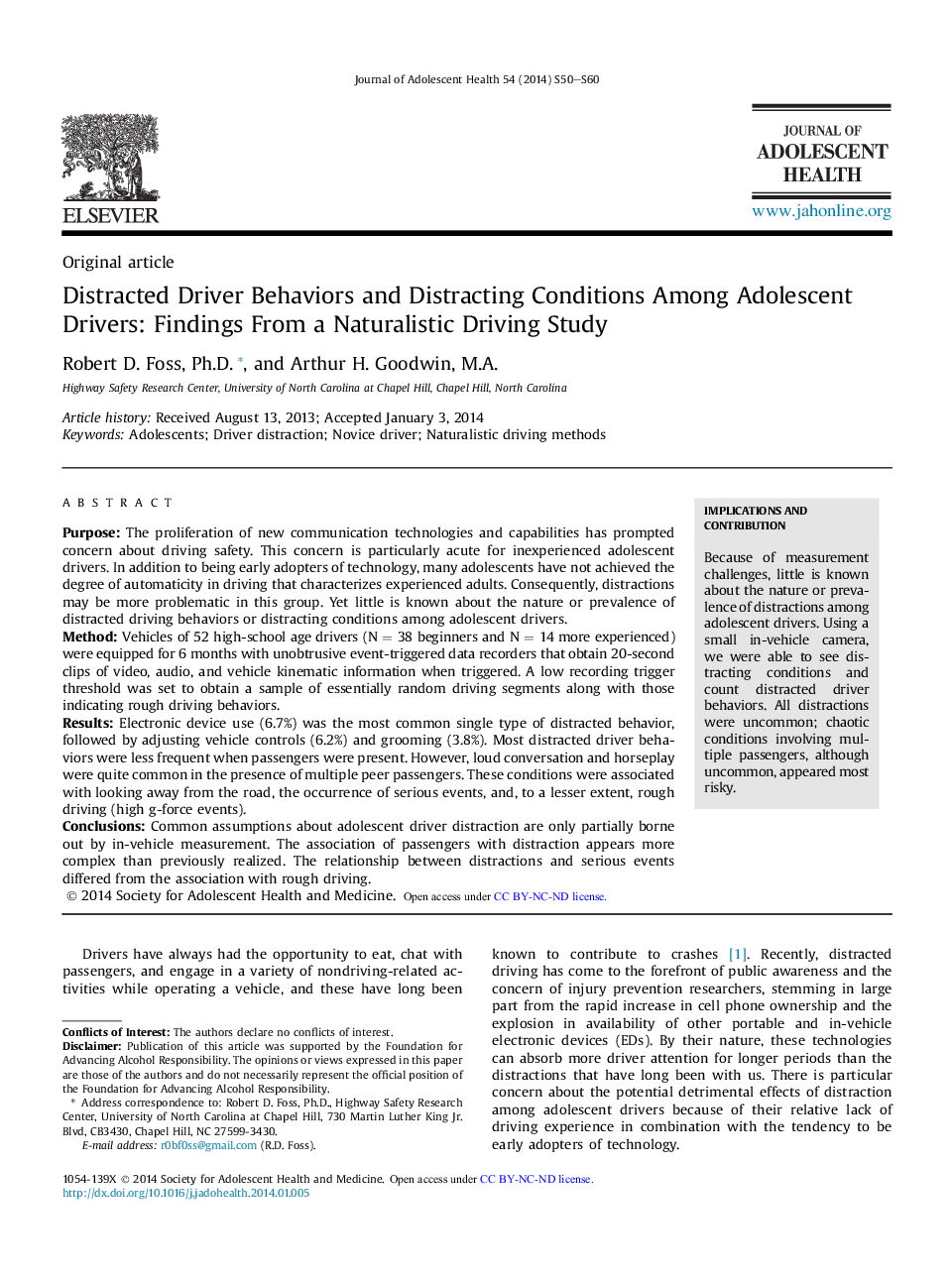| Article ID | Journal | Published Year | Pages | File Type |
|---|---|---|---|---|
| 1078781 | Journal of Adolescent Health | 2014 | 11 Pages |
PurposeThe proliferation of new communication technologies and capabilities has prompted concern about driving safety. This concern is particularly acute for inexperienced adolescent drivers. In addition to being early adopters of technology, many adolescents have not achieved the degree of automaticity in driving that characterizes experienced adults. Consequently, distractions may be more problematic in this group. Yet little is known about the nature or prevalence of distracted driving behaviors or distracting conditions among adolescent drivers.MethodVehicles of 52 high-school age drivers (N = 38 beginners and N = 14 more experienced) were equipped for 6 months with unobtrusive event-triggered data recorders that obtain 20-second clips of video, audio, and vehicle kinematic information when triggered. A low recording trigger threshold was set to obtain a sample of essentially random driving segments along with those indicating rough driving behaviors.ResultsElectronic device use (6.7%) was the most common single type of distracted behavior, followed by adjusting vehicle controls (6.2%) and grooming (3.8%). Most distracted driver behaviors were less frequent when passengers were present. However, loud conversation and horseplay were quite common in the presence of multiple peer passengers. These conditions were associated with looking away from the road, the occurrence of serious events, and, to a lesser extent, rough driving (high g-force events).ConclusionsCommon assumptions about adolescent driver distraction are only partially borne out by in-vehicle measurement. The association of passengers with distraction appears more complex than previously realized. The relationship between distractions and serious events differed from the association with rough driving.
